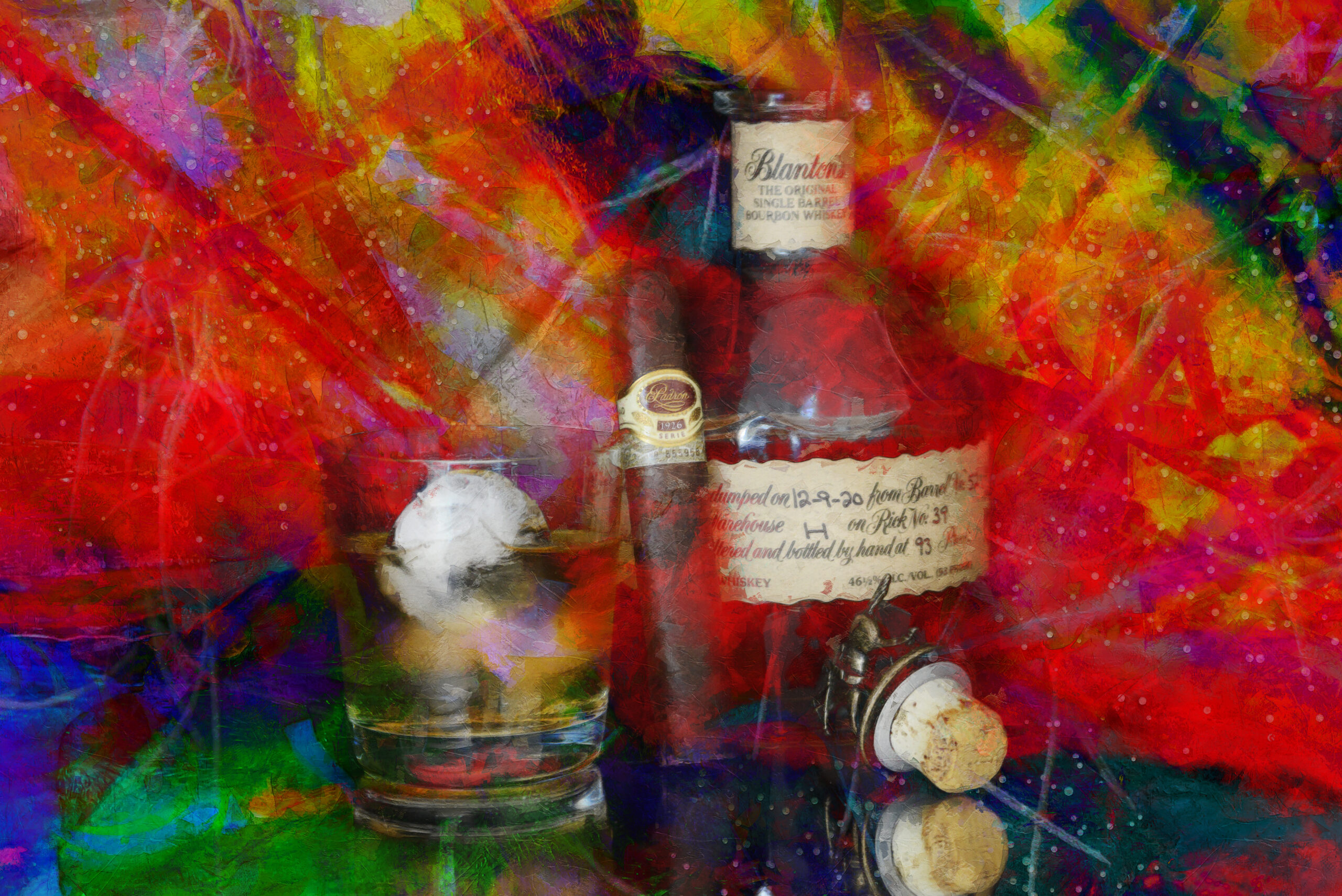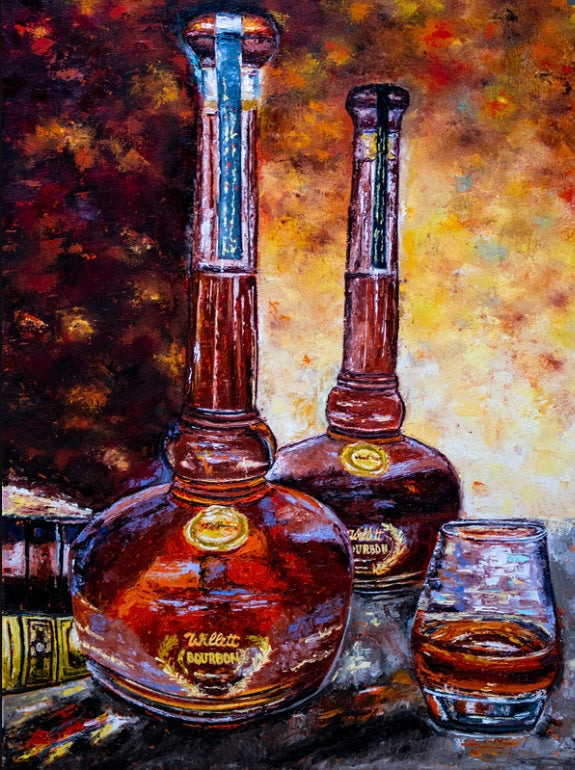Bourbon Art in Contemporary Society: Where Custom Satisfies Development
Bourbon Art in Contemporary Society: Where Custom Satisfies Development
Blog Article
The Importance of Whiskey Art in Celebrating Heritage and Workmanship in the Beverage Sector
The intricate relationship in between whiskey art and the event of heritage and workmanship within the beverage industry can not be overemphasized. Through thoughtfully designed bottles and tags, whiskey brands envelop their historic roots and the artisanal abilities that specify their manufacturing methods.
The Historical Origins of Whiskey
At the heart of bourbon's attraction exists a rich tapestry of historical roots that trace back to ancient people. The beginnings of bourbon can be linked to the purification techniques of the Sumerians and Babylonians around 2000 BCE, where very early kinds of fermented grain beverages started to arise. It was in the Center Ages that the art of distillation evolved substantially, especially in Ireland and Scotland, leading to the production of whiskey as we recognize it today.
The term "bourbon" itself stems from the Gaelic word "uisce beatha," implying "water of life." This phrase underscores the cultural importance of scotch in Celtic societies, where it was often related to rituals, celebrations, and common bonding. By the 15th century, purification became an identified craft within reclusive areas, leading the way for the establishment of legal distilleries.
As profession paths increased, whiskey's popularity grew, going beyond regional boundaries and capturing the passion of lovers worldwide. Bourbon Art. This historic journey mirrors not just the workmanship behind bourbon manufacturing however also its indispensable function in social and cultural contexts, marking it as a substantial beverage throughout history
Artistic Expression in Branding
Whiskey branding stands as an engaging intersection of creativity and business, where visual identification plays an important duty in shaping customer perception. The aesthetics of scotch labels, product packaging, and advertising products reflect not just the brand name's story however additionally its core worths and heritage. Via creative expression, distilleries convey a narrative that resonates with customers, evoking feelings and triggering links.
The usage of shade, typography, and images in branding serves to differentiate products in a saturated market. Typical themes may evoke a feeling of authenticity and craftsmanship, while modern layouts can represent development and forward-thinking. This critical artistic direction boosts brand name acknowledgment and loyalty, allowing customers to create a personal connection with the whiskey they choose.
Additionally, creative expression in branding often acts as an event of regional heritage. Distilleries often integrate regional symbols or historic recommendations right into their layouts, developing a local color that welcomes customers to take part in a wider social experience. Ultimately, the creativity behind bourbon branding not just enhances visual charm however additionally improves the general narrative of the brand name, promoting a much deeper appreciation for the craftsmanship and heritage ingrained in each container.
Craftsmanship in Container Layout
The virtuosity evident in scotch branding prolongs beyond visual identity to encompass the craftsmanship involved in bottle layout. Each container offers as a vessel not just for the spirit within, however additionally for the tale it outlines its quality, custom, and beginning. The design process calls for meticulous interest to information, as elements such as closure, product, and form contribute significantly to the general assumption of the bourbon.
Craftsmanship in bottle layout involves choosing high-grade glass that can enhance the whiskey's shade and quality, while also providing a tactile experience for the consumer. The shape of the bottle need to be both cosmetically enticing and practical, usually reflecting the heritage of the brand. Numerous distilleries go with special forms or embossed logo designs that evoke a sense of authenticity and history.
Additionally, the label style and typography find out here play an important function in communicating the brand's story. Whiskey Art. A well-crafted bottle not only mesmerizes the customer's eye yet also enhances the brand name's commitment to quality and tradition. In this method, the workmanship of container style becomes a crucial element of the bourbon experience, merging creativity with a profound respect for heritage
Cultural Significance of Whiskey Art
Commemorating tradition and workmanship, the social relevance of whiskey art goes beyond useful site mere aesthetic appeals, intertwining with the social and historical stories of the regions from which it stems. Each container functions as a canvas, depicting the distinct stories, folklore, and customs that have shaped local whiskey-making methods. The detailed designs commonly reflect the heritage of the distillers, incorporating symbols and themes that resonate with the culture and worths of their areas.

Furthermore, scotch art plays a vital duty in public celebrations and events, serving as a tangible link between individuals and their shared experiences. By valuing the artistry in bourbon packaging, consumers grow a deeper understanding and regard for the craft, inevitably improving their enjoyment of the beverage itself.
Modern Trends in Scotch Discussion
In recent times, the discussion of scotch has actually advanced to reflect contemporary tastes and fads while still honoring traditional workmanship - Bourbon Art. Distilleries are increasingly concentrating on visual aspects that enhance the total drinking experience, bridging the void between heritage and modernity
Cutting-edge container styles have arised, commonly integrating lasting materials and artistic labels that inform compelling tales. Several brand names currently team up with local musicians, instilling their products with distinct aesthetic expressions that resonate with customers. Furthermore, limited-edition launches are commonly packaged in collectible containers, adding value and allure for connoisseurs.

Verdict
In final thought, bourbon art serves as an essential conduit for expressing the heritage and craftsmanship fundamental in the beverage industry. With complex branding, innovative bottle designs, and culturally considerable imaginative components, scotch brand names properly honor their traditions and link with customers.


Workmanship in container layout includes choosing top quality glass that can improve the bourbon's shade and quality, while likewise supplying a tactile experience for the customer. In this method, the craftsmanship of container layout ends up being an important element of the whiskey experience, combining creativity with a profound respect for heritage.
In verdict, bourbon art offers as a crucial channel for sharing the heritage and workmanship intrinsic in the beverage market.
Report this page